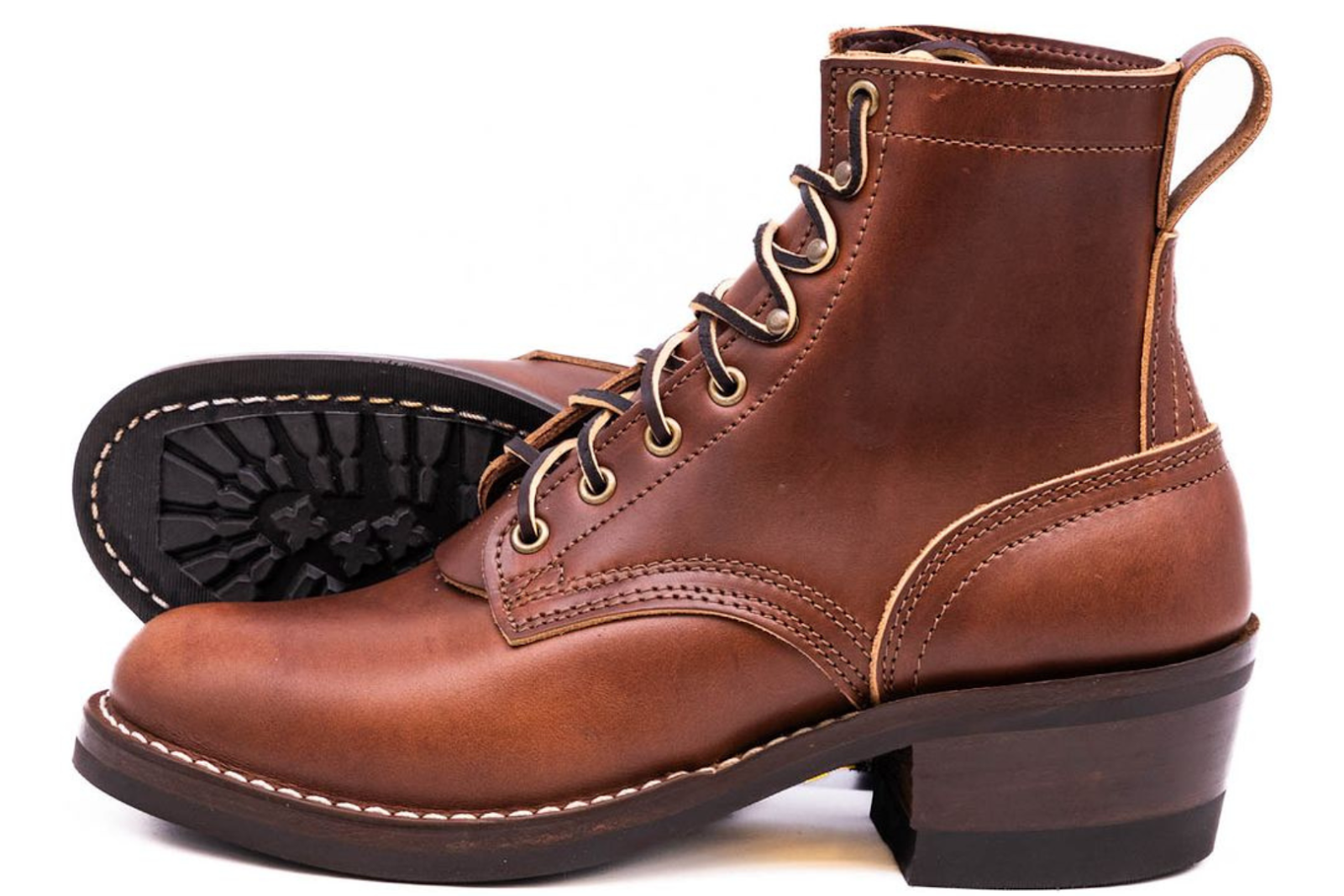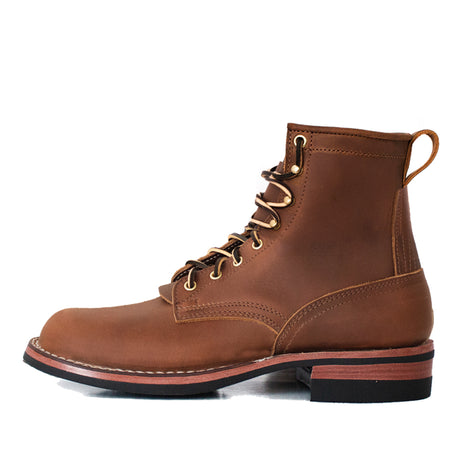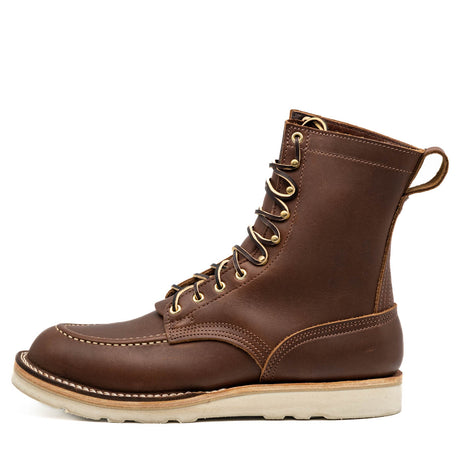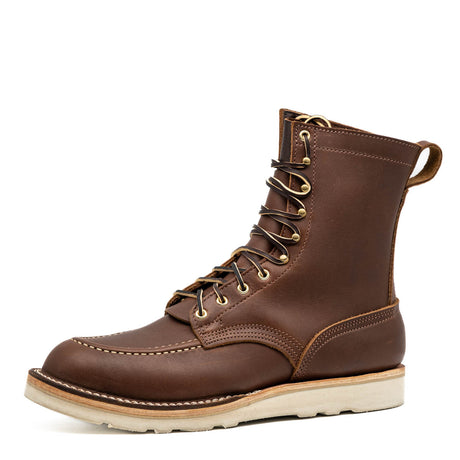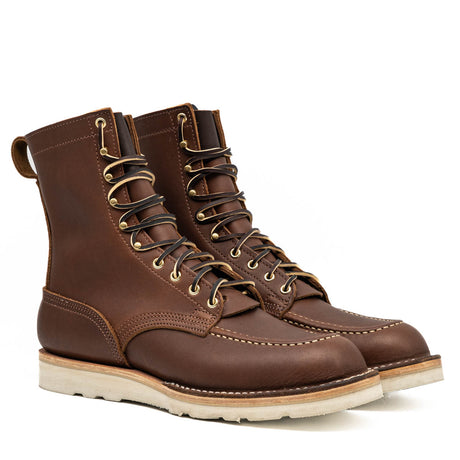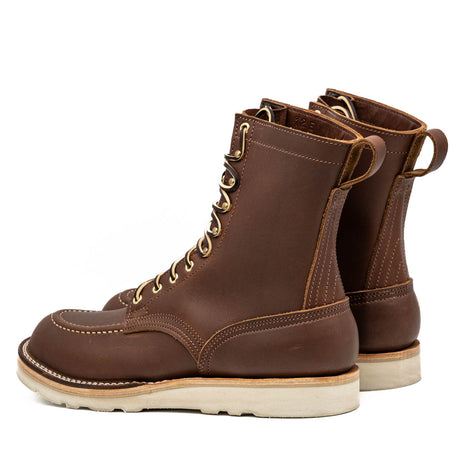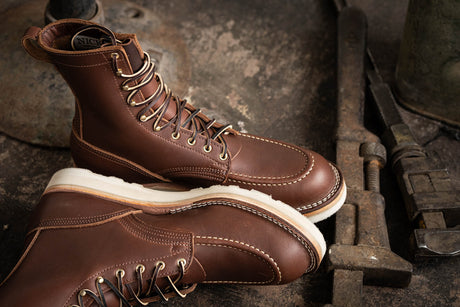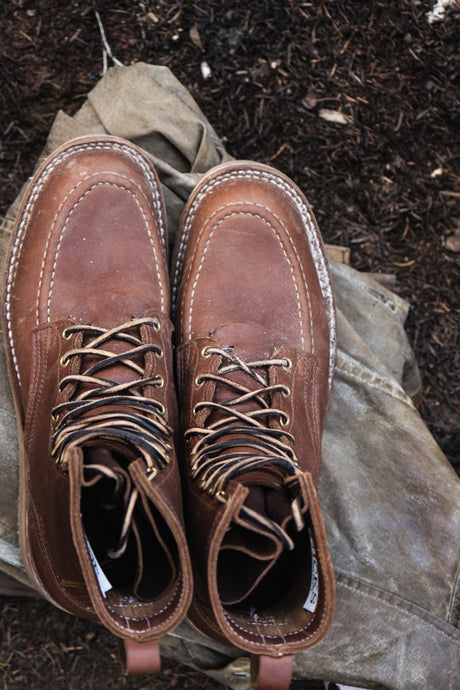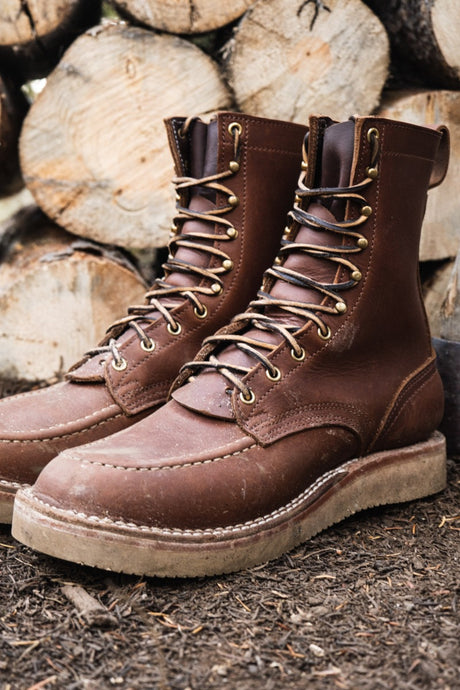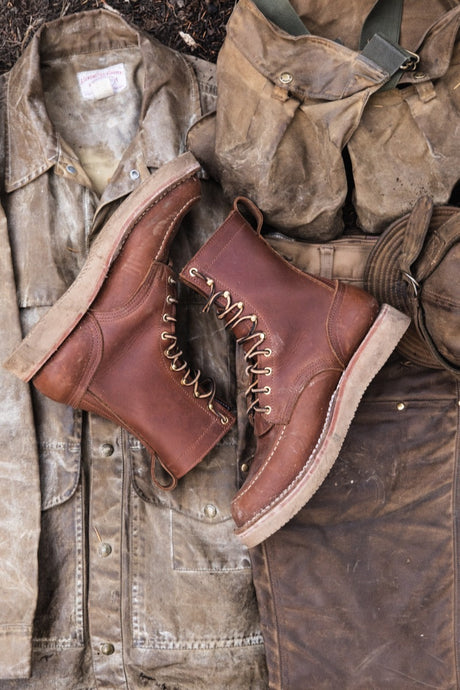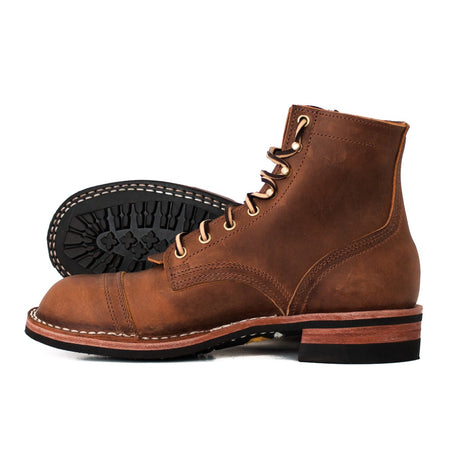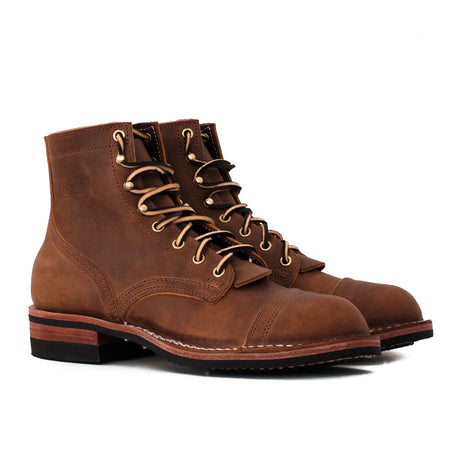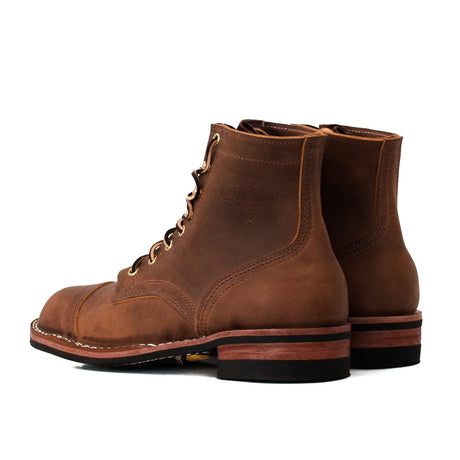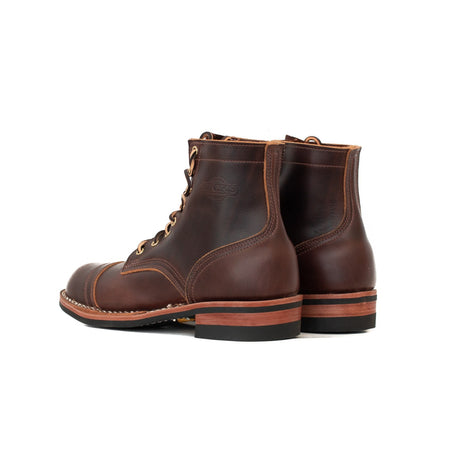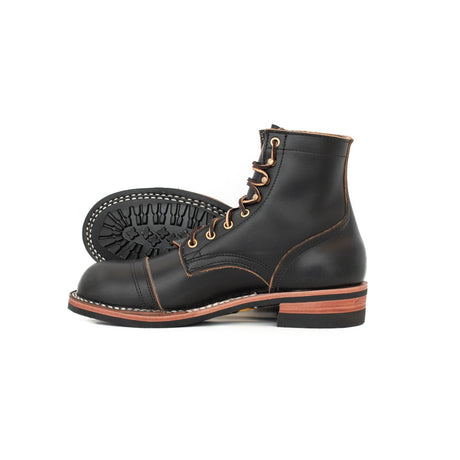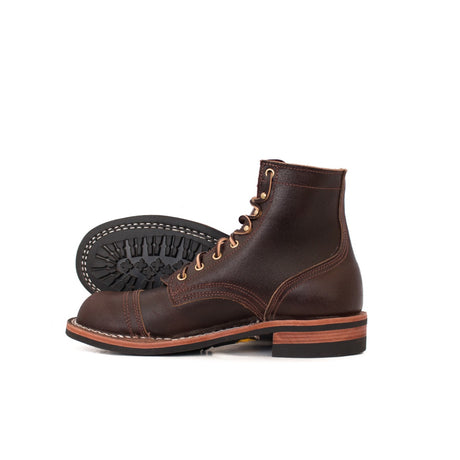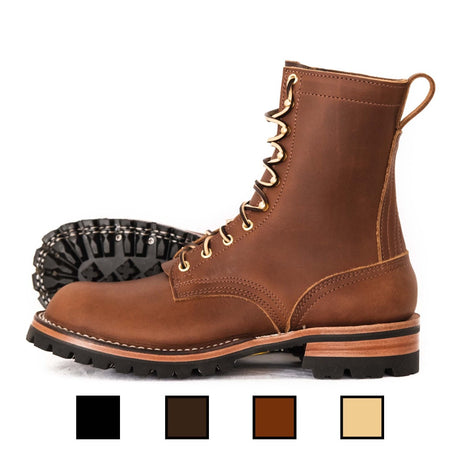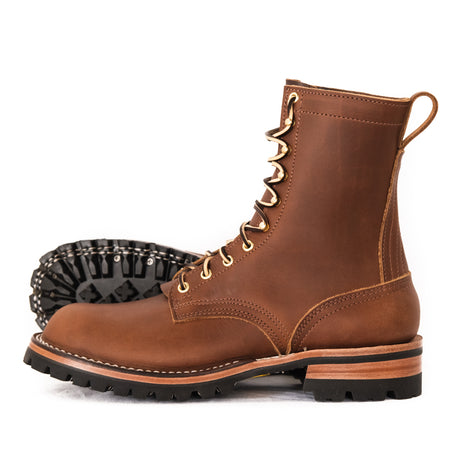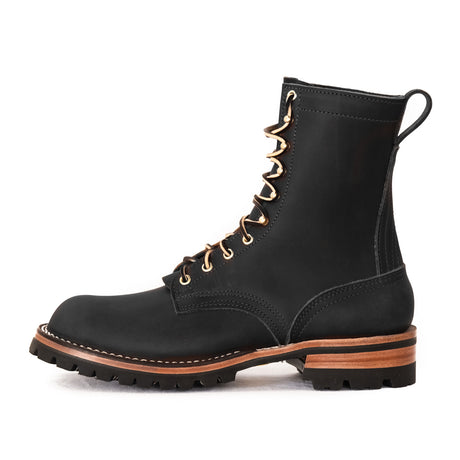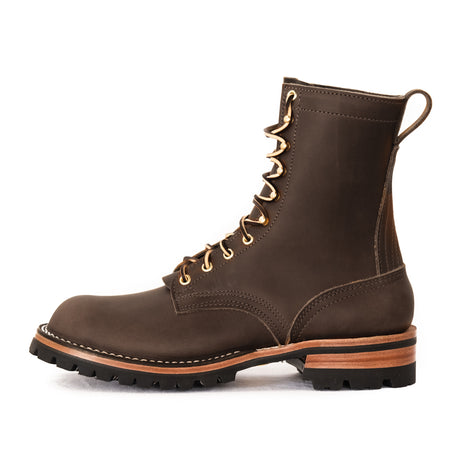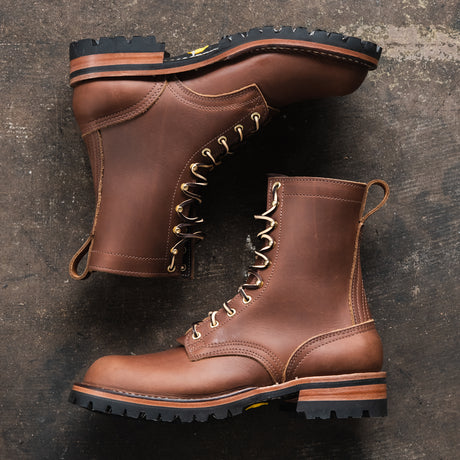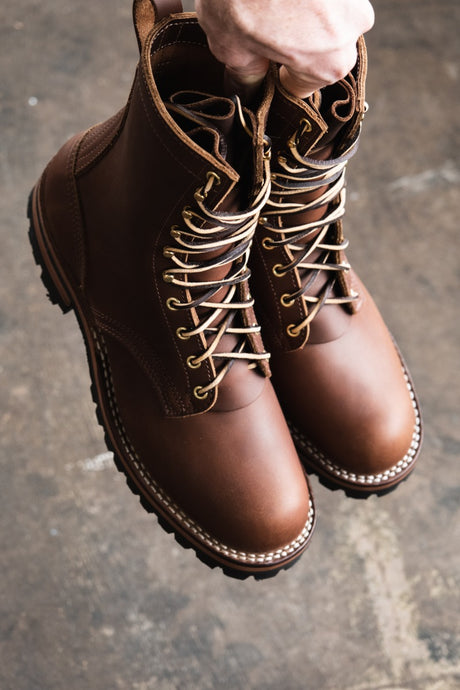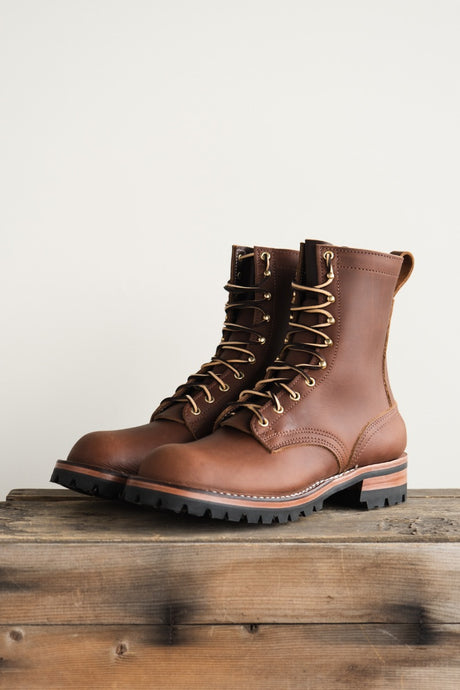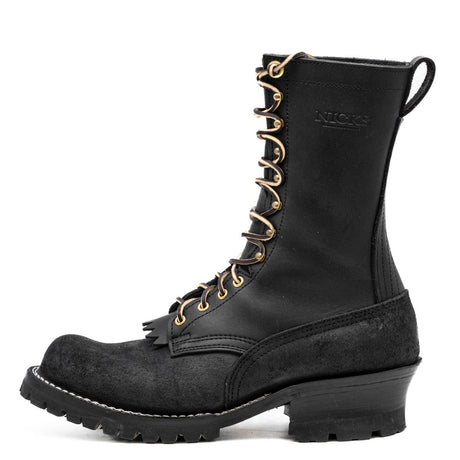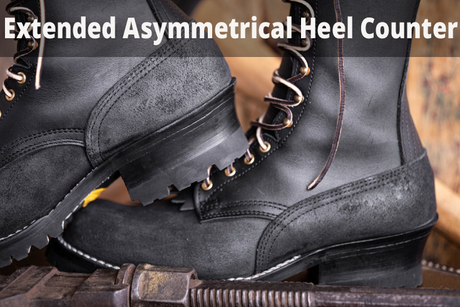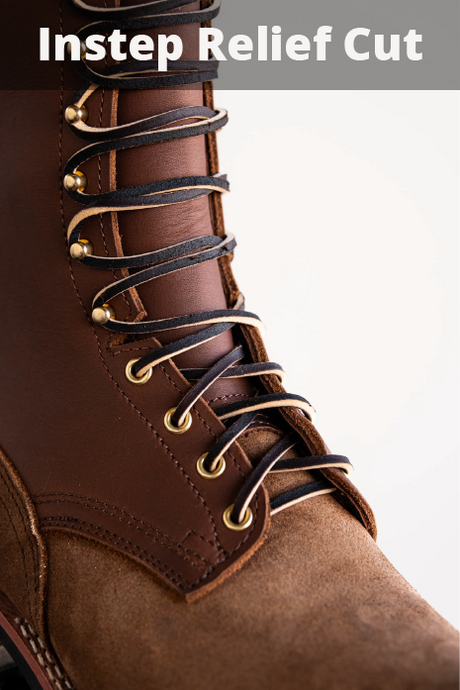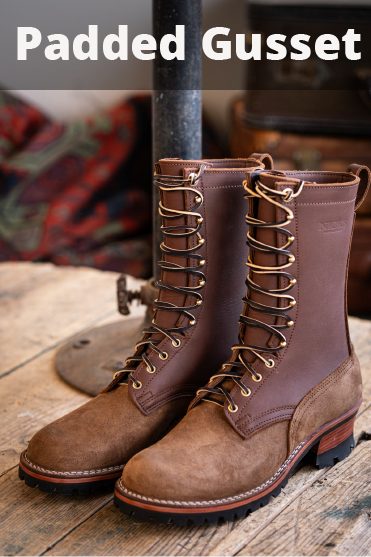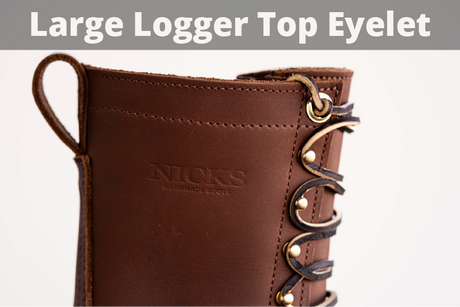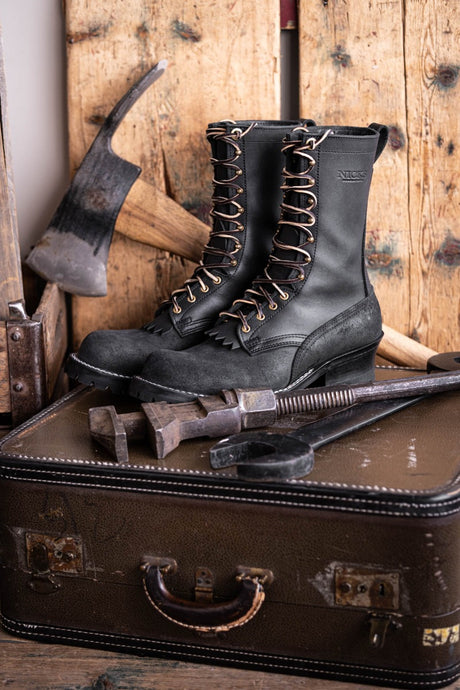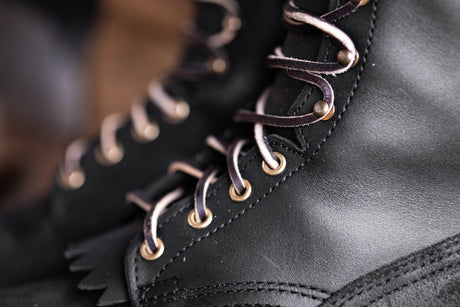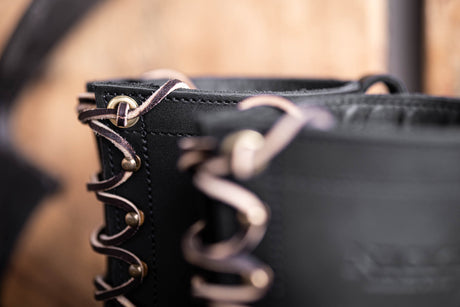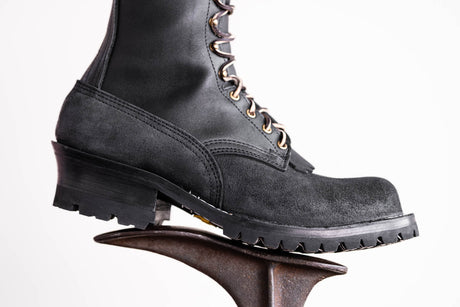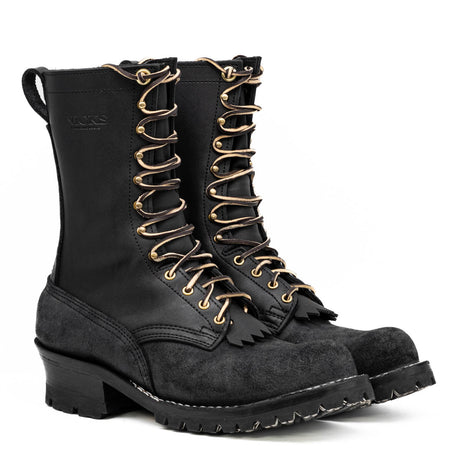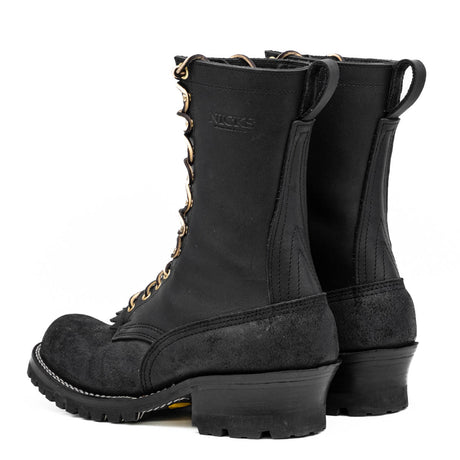Key Takeaways:
- Heel Design and Workplace Adaptability: Advanced heel designs in worker boots not only enhance comfort but also adapt to various workplace surfaces, providing crucial adaptability in dynamic or hazardous environments.
- Prevention of Common Foot Problems: Proper heel height and fit in worker boots prevent common issues like heel slippage, blisters, and excessive wear, ensuring both safety and long-term foot health.
- Impact on Work Efficiency: Well-chosen worker boot heels contribute significantly to overall work efficiency by enabling better mobility, reducing fatigue, and preventing injuries, which leads to more productive workdays.
At Nick's Handmade Boots, we are committed to providing high-quality, durable boots that are crafted with precision and care. As leaders in the footwear industry, we emphasize the perfect balance between form and function, especially for the heels of worker boots. Our expertise ensures that every pair meets the rigorous demands of both style and practicality.
In this piece, we address common issues with worker boot heels, present solutions to enhance comfort and highlight our latest innovations that combine comfort with enduring style and durability. We'll guide you on selecting the ideal heel height, and tips for maintaining your boots, and share testimonials from users who have benefited from our design. Join us to learn how to extend the life of your boots while enjoying superior comfort and style.
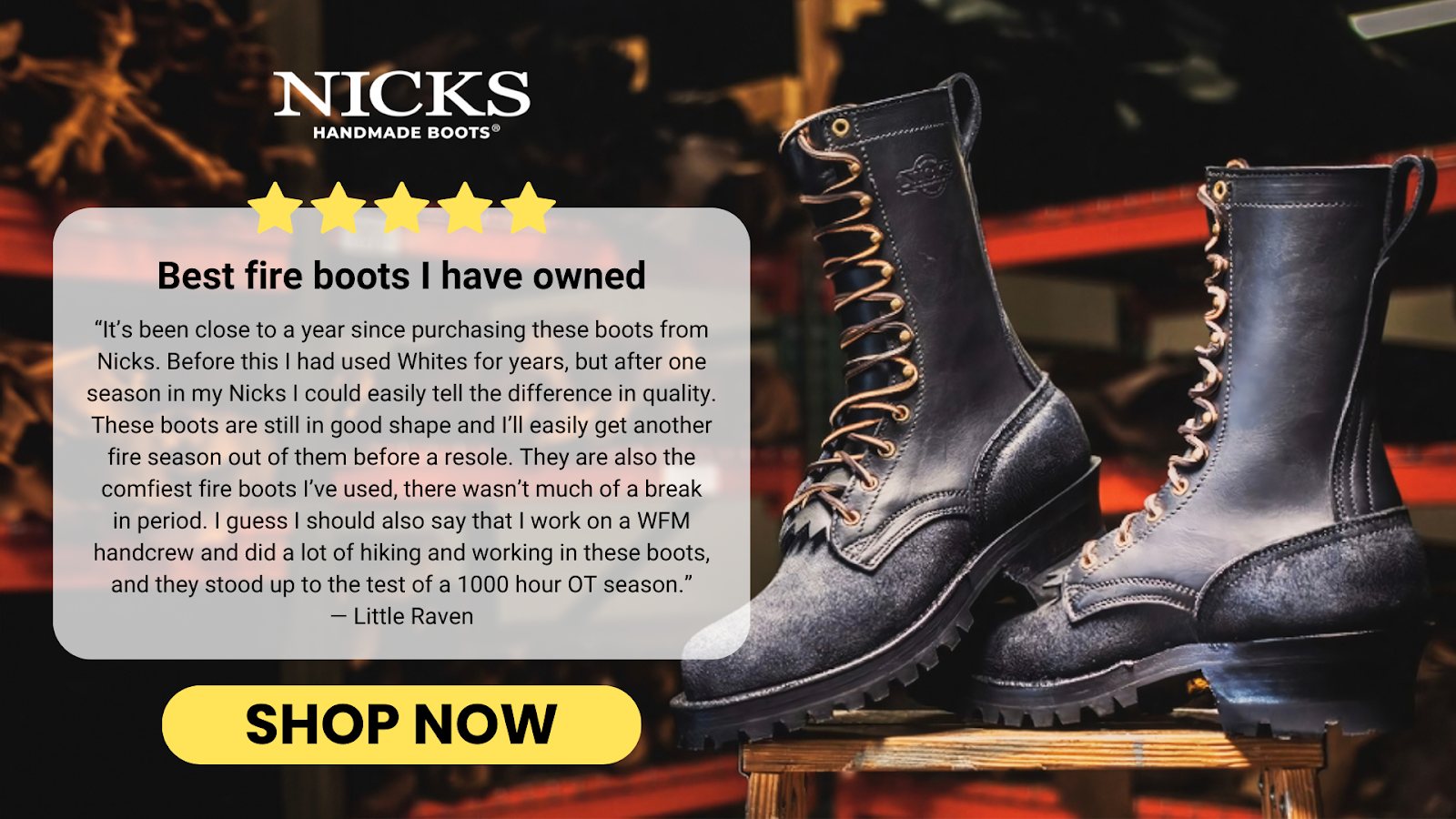
Common Issues With Worker Boot Heels
Heel Slippage And Blisters
Heel slippage in worker boots can cause not only discomfort but also dangerous instability. To combat this, ensure that your boots fit snugly around the heel and ankle. Employing thicker socks or choosing boots with adjustable straps can also provide a tighter fit. Additionally, some boots come with padded collars or have integrated heel cups, which help to lock the heel in place and reduce movement that leads to blisters.
Excessive Heel Wear
The heels of your worker boots are subjected to intense wear, especially in rugged environments. Selecting boots with reinforced heel counters made from durable materials like rubber or TPU can significantly extend their lifespan. Consider boots that feature replaceable heels to easily refresh the wear point without buying a new pair. Regularly inspecting and cleaning the heels can also prevent premature wear and tear.
Incorrect Heel Height
The right heel height is crucial for maintaining comfort and preventing strain on your legs and back. Ideally, worker boots should have a heel between one to two inches, providing enough elevation to protect the foot without compromising on comfort. Testing various heel heights before purchasing can help you find the perfect balance for your specific workplace demands and personal comfort.
Stiffness During Break-In
New boots often feel stiff, particularly around the heels, which can lead to discomfort. To ease this, consider using leather conditioners or boot oils that soften the material. Gradually increasing wearing time each day allows the boots to mold to your feet's shape naturally. Additionally, flexing and bending the boots gently by hand can help loosen stiff areas before you start wearing them extensively.
Choosing The Right Heel Height For Comfort And Function
- Understanding Heel Height Impact - Heel height in worker boots influences not just comfort, but also your overall posture and walking mechanics. A heel that is too high can lead to unnatural walking patterns, causing strain on the lower back and knees over time. Conversely, a heel that is too low may not provide sufficient protection from sharp objects on the ground. Understanding this balance is crucial for choosing boots that support a healthy posture and reduce the risk of injury.
- Optimal Heel Height - The optimal heel height for worker boots typically ranges between one to two inches. This height provides enough lift to avoid common hazards on the ground while maintaining balance and not altering your natural gait. It also helps in distributing your body weight more evenly across the foot, reducing pressure points and fatigue.
- Safety and Protection - Adequate heel height plays a pivotal role in workplace safety by keeping your feet adequately elevated from potential hazards. This elevation is essential for preventing injuries like punctures or impacts from falling objects. A well-chosen heel height also helps in maintaining stability on uneven surfaces, which is critical in many work settings.
- Testing Heel Heights - It's important to spend time testing different heel heights when selecting worker boots. Try walking on various surfaces to assess the stability and comfort each heel height offers. Pay attention to how each height affects your walking stride and comfort throughout the day. This practical testing can provide valuable insights into which heel height feels most natural and supportive for your daily tasks.
- Personal Comfort vs. Workplace Demands - Balancing personal comfort with the demands of your workplace is key when selecting the right heel height. While personal preference plays a significant role, it's essential to consider the specific requirements of your job. For instance, if you are frequently climbing ladders or working on uneven terrain, a lower heel may offer better stability.
How To Test Heel Support Before Buying Worker Boots
Visual Inspection
Begin your evaluation with a thorough visual inspection of the boots' heel area. Look for indicators of solid construction such as reinforced stitching and high-quality materials. The heel should be seamlessly integrated with the boot's sole, showing no signs of weak attachment or poor craftsmanship. This initial check is crucial as it can reveal much about the overall durability and structural integrity of the boots.
In-Store Fitting
When trying boots on, make sure the heel fits perfectly; it should not be too loose or too tight. As you walk around, pay attention to any heel movement within the boot. A properly fitting heel will stay in place, providing stability and comfort as you move. This test is important because a boot that allows the heel to slip could lead to discomfort and injury over time.
Flexibility And Resistance Test
Perform a flexibility test by applying gentle pressure to the heel to check its resistance and elasticity. A good support heel will compress slightly under pressure but quickly return to its original shape, demonstrating both flexibility and strength. This resilience helps in absorbing impacts and providing a stable base, essential qualities in work environments that require a lot of standing or walking.
Ask For Expert Advice
Don't hesitate to consult with store staff or footwear experts while shopping. Their expertise can guide you toward boots with the best heel support for your specific needs. They can offer valuable insights into which models are best suited for different types of work environments, ensuring you get the most appropriate and supportive footwear.
Test On Different Surfaces
If possible, test the boots on various surfaces available in the store, such as carpet, hard floors, and any simulated terrain they may have. This testing can give you a realistic idea of how the boots will perform under different conditions. Assessing how the heel supports and manages impacts on various surfaces can help you make a more informed decision.
Maintenance Tips For Durable Heels
Regular Cleaning
To maintain the durability of your worker boots' heels, regular cleaning is essential. After each use, gently wipe the boots with a damp cloth to remove dirt and debris. For more stubborn stains or mud, use a soft-bristled brush along with a mild leather cleaner to ensure the leather's integrity is maintained without causing damage.
Proper Storage
Storing your boots correctly can significantly prolong their life. Keep them in a cool, dry place away from direct sunlight, as excessive heat and UV rays can dry out and crack the leather. Using boot trees or stuffing the boots with newspaper helps maintain their shape and prevents the heels from warping, which can affect their functionality and comfort.
Heel Protectors
Heel protectors are a worthwhile investment, especially in harsh work environments. These protectors shield the heels from excessive wear and tear, thereby extending the life of your boots. They are straightforward to apply, can be replaced easily when they wear down, and provide an extra layer of durability against rough terrain.
Periodic Conditioning
Periodic conditioning is vital for keeping the leather of your boots supple and preventing cracks. Depending on how often you wear them, apply a high-quality leather conditioner every few months. This routine care ensures that the leather remains durable and that the heels maintain their structural integrity without becoming brittle over time.
The Role Of Heel Design In Preventing Workplace Injuries
Stability And Balance
A well-designed heel provides essential stability, helping workers maintain balance in various conditions, from slick oil-covered floors to uneven construction sites. Stability in the heel design minimizes the risk of slips and falls, which are among the leading causes of workplace injuries. Ensuring the heel is not too high can also improve balance, as overly high heels might lead to awkward postures, increasing the risk of accidents.
Ergonomic Heel Design
Ergonomic heel designs align with the natural structure of the foot, promoting better posture and more comfortable long-term wear. These designs help prevent common occupational health issues, such as joint pain and spinal problems, which often arise from improper footwear. By following the contours of the foot, ergonomic heels can distribute pressure more evenly, reducing fatigue and enhancing worker productivity.
Weight Distribution
Heels that are designed to distribute weight effectively can significantly reduce the strain on a worker's lower back and joints. This is particularly important in professions that require standing for long periods, as even distribution of weight helps to prevent overuse injuries. Properly designed heels ensure that no single part of the foot bears too much pressure, which is crucial for long-term musculoskeletal health.
Traction Enhancement
Heels made with materials that enhance traction can dramatically reduce the risk of workplace accidents, especially in environments where floors may be slick or debris-covered. The right tread design and material not only provide better grip but also contribute to overall foot stability. Different work environments may require different types of traction, which is why it's important for workers to choose boots with heels suited to their specific workplace conditions.
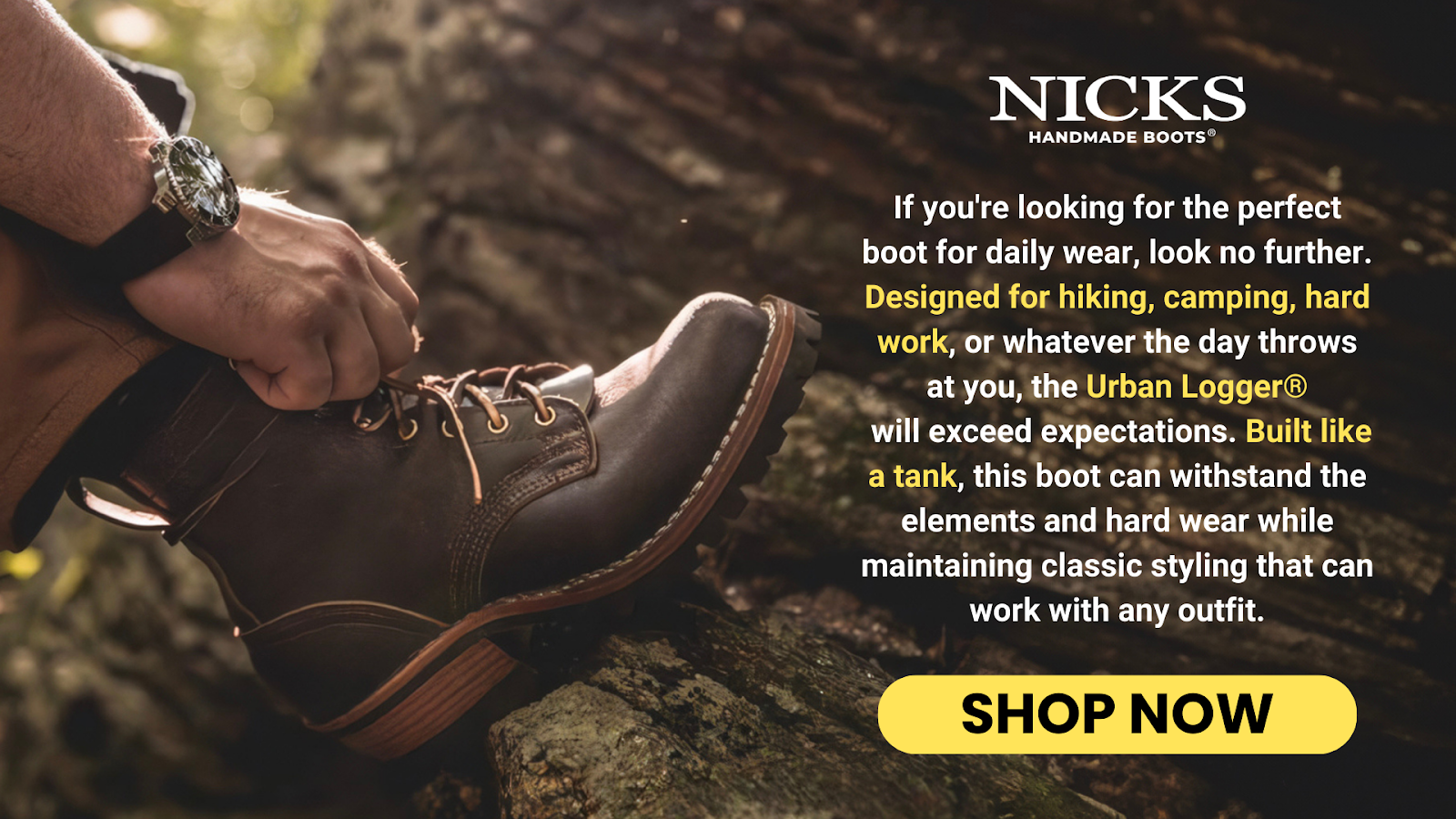
Final Thoughts
Selecting the right heel height in worker boots is crucial for ensuring safety, comfort, and performance in the workplace. By focusing on the balance between form and function, the guidance provided helps consumers choose boots that enhance natural walking patterns, reduce fatigue, and protect against workplace hazards. This commitment to quality craftsmanship and detailed consumer education underscores the importance of well-designed footwear in maintaining occupational health and productivity.
Read also:
Frequently Asked Questions About Worker Boots Heels
What are the benefits of having heels on worker boots?
Heels on worker boots provide elevation, protecting the foot from hazards and aiding in posture alignment. They help reduce leg and back strain by maintaining an optimal angle for foot placement. This added elevation also improves overall stability and balance during movement.
How does heel height impact workplace safety?
The right heel height contributes significantly to workplace safety by ensuring stability and reducing slip risks. An optimal heel height, typically between one to two inches, keeps the foot properly elevated from potential hazards. It also supports a natural walking pattern, essential for preventing musculoskeletal injuries.
Can the heel height affect my comfort during long work hours?
Yes, heel height plays a crucial role in comfort during prolonged periods of standing or walking. An incorrect heel height can lead to discomfort or exacerbate fatigue by altering natural biomechanics. It is important to choose a heel that matches personal comfort and workplace demands.
What should I look for in the heel design when choosing worker boots?
When choosing worker boots, select a heel design that offers robust support and stability. Durable materials and a well-integrated structure prevent heel breakdown and ensure longevity. Additionally, features like traction control are critical for safety in various work environments.
How often should I replace the heels on my worker boots?
The need to replace heels depends on the level of wear and the work environment. Look for signs of uneven wearing or damage, which indicate a need for replacement. Choosing boots with replaceable heels can be a cost-effective solution for frequent wear issues.
Are there specific heel features that help with heel slippage and blisters?
To prevent heel slippage and blisters, opt for boots with features like padded collars and integrated heel cups. These additions help secure the foot within the boot, reducing movement that can lead to discomfort. Adjustable straps can also aid in achieving a snugger, more stable fit.
How can I ensure the heels of my boots last longer?
Regular maintenance such as cleaning and applying a leather conditioner can significantly extend the life of your boots' heels. Using heel protectors and storing boots properly also helps preserve their condition. Regular inspection for wear and timely replacements are key to long-lasting heel durability.
What types of heel are best for rugged environments?
For rugged environments, choose heels made from sturdy materials like rubber or TPU to withstand harsh conditions. These materials offer better resistance to wear and provide essential stability. Reinforced heel counters can also enhance durability and support.
How do I know if the heel height is right for my job requirements?
Assessing the right heel height involves considering both your work demands and personal comfort. Testing different heel heights in a real-world setting can provide insights into what works best for your specific needs. Focus on how the heel impacts your posture, stability, and comfort throughout the workday.
What is the role of ergonomic heel design in worker boots?
Ergonomic heel designs support the foot's natural structure, enhancing comfort and reducing the risk of injury. They distribute weight evenly, which is crucial for those who stand for long periods. Ergonomically shaped heels help in maintaining proper posture and reducing overall body fatigue.



